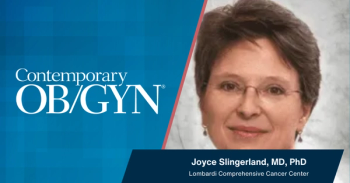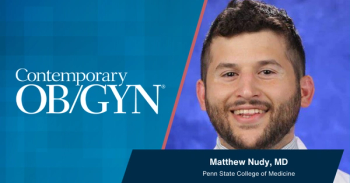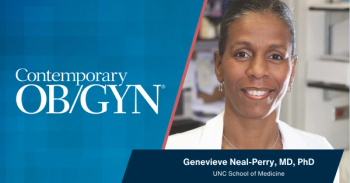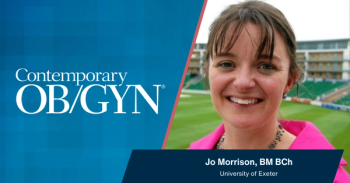
Perinatology and the Internet
The Internet has the potential to revolutionise the way we obtain and disseminate medical information. There is an enormous volume and variety of health-related information on the Internet [1, 2]. Some information available on the Internet about perinatology (aimed at professionals) is discussed here. We restrict ourselves mainly to websites for professionals in the English language.
Introduction
The Internet has the potential to revolutionise the way we obtain and disseminate medical information. There is an enormous volume and variety of health-related information on the Internet [1, 2]. Some information available on the Internet about perinatology (aimed at professionals) is discussed here. We restrict ourselves mainly to websites for professionals in the English language.
Perinatology (general)
A useful place to start reading for perinatology information is at the World Wide Web links page in the Fetal Monitoring section of OBGYN.net (a physician-reviewed network for doctors, medical professionals, women and the medical industry) at
There are a number of regional perinatology organisations that have their own websites. The Society for Maternal-Fetal Medicine, formerly the Society of Perinatal Obstetricians, has a site at
General obstetrics and gynaecology societies
Over 20 national societies under the auspices of FIGO, the International Federation of Gynecology and Obstetrics (
Twin-to-twin transfusion syndrome (TTS)
Although it is difficult to find all the topics in perinatology at one website, there are several websites available on particular topics of interest in perinatology. For example, there are a number of interesting sites about the twin-to-twin transfusion syndrome (TTS). The Twin-to-Twin Transfusion Syndrome Foundation (
The UK Twin-Twin Transfusion Syndrome Association has a site at
Fetal monitoring
For the midwives and junior doctors who find the interpretation of cardiotocography (CTG) difficult, the site at
Midwifery resources
The American College of Nurse-Midwives (
Evidence-based perinatology
Although obstetrics has a very long history as an empirical science, evidence-based obstetrics is now the norm. A considerable part of the Cochrane Library comprises randomised trials in obstetrics. Indeed, the predecessor of the current Cochrane Library was the Cochrane Childbirth and Pregnancy Database. Full-text articles from the Cochrane database are available for obstetrics and gynaecology professionals after registering free of charge at http://www.obgyn.net/cochrane.asp
Journals
A variety of journals are available online, for example, the Journal of Maternal-Fetal Medicine (
UK sites: perinatal audit
There are a number of UK-based sites on perinatology, two of which are highlighted here. The West Midlands Perinatal Institute (
Clinical trials
In a randomised, controlled trial, to allow larger sample sizes, shorter sampling periods and lower unit costs, new communication methods like the Internet are useful. The World Wide Web can provide global access, fast interaction and automation. A prototype Internet Trials Service is currently being tested with a real international clinical trial: the Growth Restriction Intervention Trial (
How can information be evaluated?
There are many recognised criteria for assessing the quality of websites in general and for health information in particular [3]. Amongst the most important criteria for quality are credibility and content [4]. The source of medical information is usually regarded as the main criterion for its credibility. Currency is shown by websites that display the date of the original document or content posting on the Internet, and that of any updates. Hierarchy of evidence posted on each website is a reliable indicator of the validity of health research. The accuracy of contents is usually best judged against rigorously developed, peer-reviewed and published guidelines for each of the topics concerned. Website quality can also be assessed by features such as disclosure, links, design, aesthetics, interactivity and ease of use, which are related more to presentation and usage.
Perinatology on the web: could it be better?
The quality of medical information on the Internet is not accurate [5–7]. Most of the material available is part of advertisement strategy and hence could be biased. As for many other areas of medicine, most perinatology sites are from the USA, and may not always be relevant to the UK and other European medical communities. Credible organisations should be able to provide easily accessible information to both patients and care-givers. There are very few credible sites such as OBGYN.net which endeavour to do this. Recently, a group of 20 leading health Internet services have joined to produce a 14-point set of ethical principles designed to ensure reliable health information and services to as many as 11.5 million consumers [8].
Summary
There are a number of useful sites about perinatology on the World Wide Web. These can be used for dissemination of information, interaction, research and support. As with all medical information posted on the Internet, there is a need for vigilance in evaluating such information prior to incorporating it in healthcare decision-making.
Acknowledgement
The author would like to thank Dr. M. Latthe for his help with editing the manuscript.
References:
References
1. Lundberg GD, for the JAMA Review Group. One multimedia-medical world [editorial]. J Am Med Assoc 1995; 274: 655.
2. Kassirer JP. The next transformation in the delivery of health care [editorial]. N Engl J Med 1995; 332: 52â4.
3. Kim P, Eng TR, Deering MJ, Maxfield A. Published criteria for evaluating health related web sites: review. Br Med J 1999; 318: 647â9.
4. Criteria for assessing the quality of health information on the Internet. URL:
5. Latthe PM, Latthe M, Khan KS. Quality of medical information about menorrhagia on the worldwide web. Br J Obstet Gynaecol 2000; 107: 39â43.
6. Latthe PM, Latthe M, Khan KS. Quality of information on female sterilisation available on the Internet. J Obstet Gynaecol 2000; 20: 167â70.
7. Latthe M, Latthe PM, Charlton R. Quality of information on emergency contraception on the Internet. Br J Fam Plann 2000; 26: 39â43.
Newsletter
Get the latest clinical updates, case studies, and expert commentary in obstetric and gynecologic care. Sign up now to stay informed.











